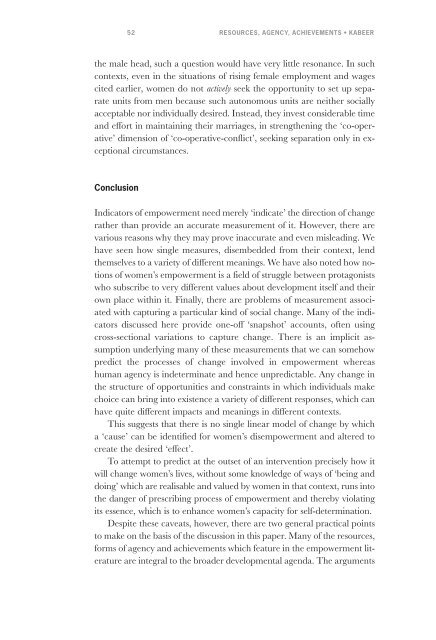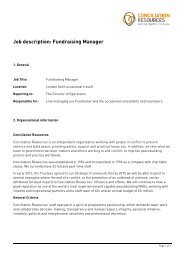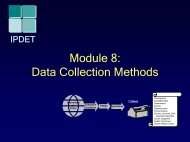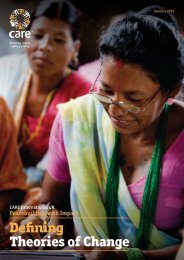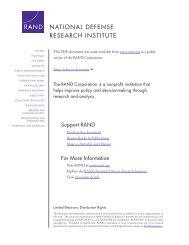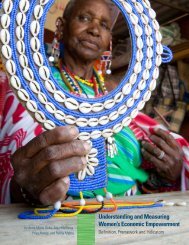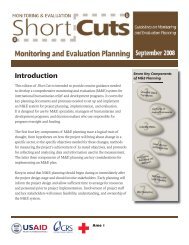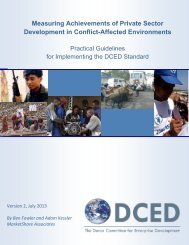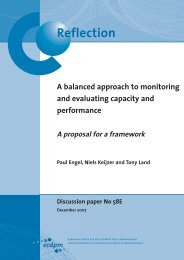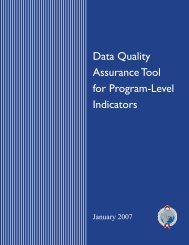Discussing Women's Empowerment - Sida
Discussing Women's Empowerment - Sida
Discussing Women's Empowerment - Sida
You also want an ePaper? Increase the reach of your titles
YUMPU automatically turns print PDFs into web optimized ePapers that Google loves.
52 RESOURCES, AGENCY, ACHIEVEMENTS • KABEER<br />
the male head, such a question would have very little resonance. In such<br />
contexts, even in the situations of rising female employment and wages<br />
cited earlier, women do not actively seek the opportunity to set up separate<br />
units from men because such autonomous units are neither socially<br />
acceptable nor individually desired. Instead, they invest considerable time<br />
and effort in maintaining their marriages, in strengthening the ‘co-operative’<br />
dimension of ‘co-operative-conflict’, seeking separation only in exceptional<br />
circumstances.<br />
Conclusion<br />
Indicators of empowerment need merely ‘indicate’ the direction of change<br />
rather than provide an accurate measurement of it. However, there are<br />
various reasons why they may prove inaccurate and even misleading. We<br />
have seen how single measures, disembedded from their context, lend<br />
themselves to a variety of different meanings. We have also noted how notions<br />
of women’s empowerment is a field of struggle between protagonists<br />
who subscribe to very different values about development itself and their<br />
own place within it. Finally, there are problems of measurement associated<br />
with capturing a particular kind of social change. Many of the indicators<br />
discussed here provide one-off ‘snapshot’ accounts, often using<br />
cross-sectional variations to capture change. There is an implicit assumption<br />
underlying many of these measurements that we can somehow<br />
predict the processes of change involved in empowerment whereas<br />
human agency is indeterminate and hence unpredictable. Any change in<br />
the structure of opportunities and constraints in which individuals make<br />
choice can bring into existence a variety of different responses, which can<br />
have quite different impacts and meanings in different contexts.<br />
This suggests that there is no single linear model of change by which<br />
a ‘cause’ can be identified for women’s disempowerment and altered to<br />
create the desired ‘effect’.<br />
To attempt to predict at the outset of an intervention precisely how it<br />
will change women’s lives, without some knowledge of ways of ‘being and<br />
doing’ which are realisable and valued by women in that context, runs into<br />
the danger of prescribing process of empowerment and thereby violating<br />
its essence, which is to enhance women’s capacity for self-determination.<br />
Despite these caveats, however, there are two general practical points<br />
to make on the basis of the discussion in this paper. Many of the resources,<br />
forms of agency and achievements which feature in the empowerment literature<br />
are integral to the broader developmental agenda. The arguments


